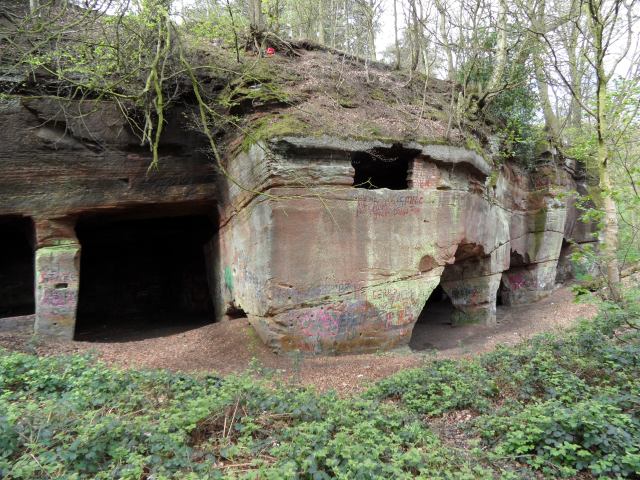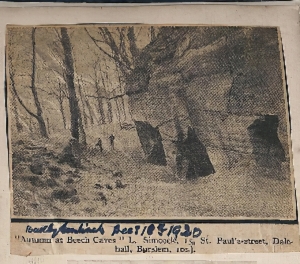Local author Philip Emery (Necromatra set in Burslem, and The Shadow Cycles), former lecturer in Creative Writing at Keele University, is set to release his The Celt in the Machine, “a collection of fiction and verse spanning over thirty years”. The book from Immanion Press will be launched at Clayton public library, Newcastle-under-Lyme, on Wednesday 20th May 2015 (7.30pm). During the evening there will be readings from the new book, and a discussion on ebook publishing with ebook expert Roy Gray of TTA Press.
Monthly Archives: April 2015
The Natural Kalendar
Mr. Robert Garner’s “The Natural Kalendar” gives a Natural Calendar for North Staffordshire, based on observations made over many years from 1838 to 1864, and for the birds “much longer”. This is from the North Staffordshire Naturalists’ Field Club and Archaeological Society, Annual Report, 1881.
Garner was very respected, ‘the father of the Club’, and a most reliable naturalist.
Natural Kalendar. Latitude 53, altitude 370.
Flowers expand, Week
January.
1. Christmas Rose.
2. Winter Aconite.
3. Catkins of the Hazel; the Alder later.
4. White Potentilla.
The bat sometimes on the wing; the robin and the wren, Sic, sing. Amongst insects the tiputae are out.
February.
1. Red dead Nettle.
2. Mezereon.
3. Coltsfoot.
4. Cornus mascula.
Helophorus out (13). The hedge sparrow sings.
March.
1. Pilewort.
2. Wood Anemone.
3. Wild Snowdrop.
4. Wild Daffodil.
Frogs croak and rooks now busy. The Yellow-hammer sings.
April.
1. Dog’s Violet.
2. Stitchwort.
3. Butter-burr.
4. Wild Hyacinth.
The chiff-chaff comes about the 7th; the sand martin about the 14th; the swallow arrives on an average in the 4th week, also the willow wren; the cuckoo generally in the third week, and the tree-pipit.
May.
1. Sweet Cicely.
2. Hawthorn. (The May-bug, the Magpie-moth.)
3. Butterfly Orchis.
4. Bird Cherry.
The garden warbler, corncrake, the swift in the 2nd week.
June.
1. Ragged Robin.
2. Bitter-sweet.
3 The Elder Flowers.
4. Potentilla anserina. (The Ghost-moth.)
July.
1. Stone crop.
2. Giant Throat-wort.
3. Meadow Geranium.
4. Foxglove.
Most birds are now become mute.
August.
1. Toad-flax.
2. Wood hawkweed.
3. Narrow-leaved ditto.
4. Green Habenaria.
The swift leaves early in the month.
September.
1. Field Gentian.
2. Grass of Parnassus.
3. Michaelmas Daisy.
Flowers now become scarce; the redwing appears, and the wheatear also en passant.
October.
1. Crocus Nudiflorus.
The bilberry bears a second crop, and a few late flowers are still found. Now fungi abound. The tree-foliage is now most varied in its tints. Swallows and martins are last seen about the middle of the month.
November.
The common pansy is often still very pretty in the fields. The ivy flowers, and the mole is often at work in open weather.
December.
The Christmas rose often flowers about the middle of the month, also a few other floral remnants as periwinkle, ivy-leaved toadflax, but generally speaking we may say:
“No mark of vegetable life is seen,
No bird to bird repeats his tuneful call,
Save the dark leaves of some rude evergreen,
Save the lone redbreast on the moss-grown wall.”
Beech Caves rock homes
Just south of Stoke are old rock houses that people used to live in, the Beech Caves near Tittensor, a few miles south of Trentham. Seemingly they’re being left to the local yobs and vandals. Might they be restored and turned into a hobbit-y tourist attraction?
North Staffordshire Naturalists’ Field Club, Annual Report, 1878. Sectional Reports : Geology, report on field trip to the “New Red Sandstone quarry, at Beech” and vicinity. “Not far from Beech inhabited cottages, cut in the living rock, were observed.”
An old scrapbook cutting from the Sentinel, 1920, photographed by Simcock of Dale Hall…




